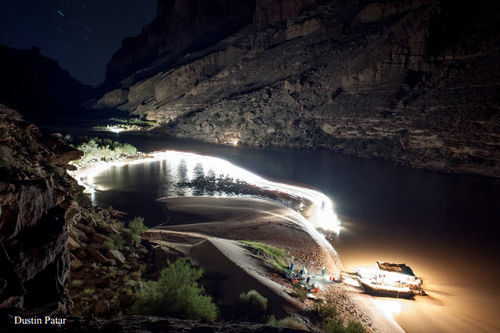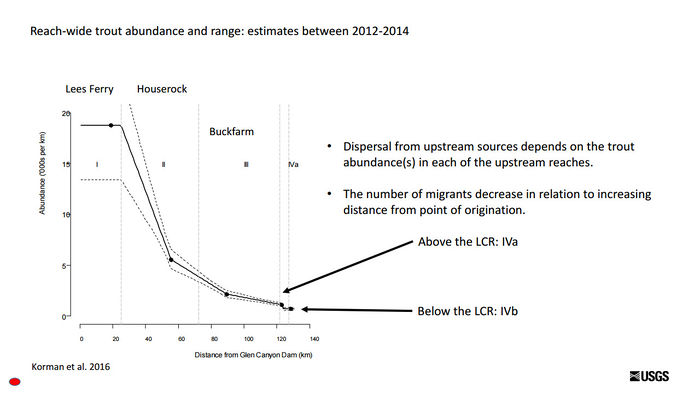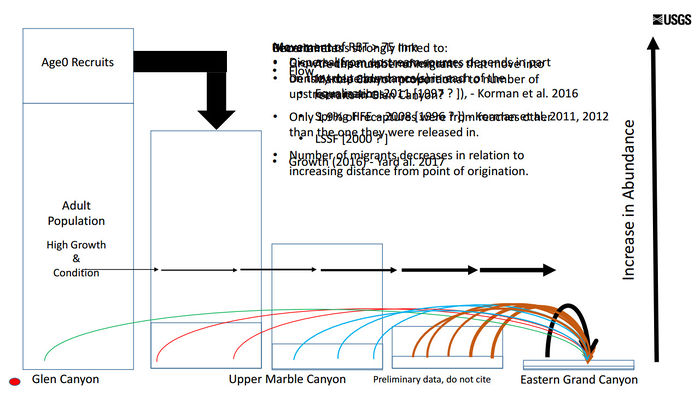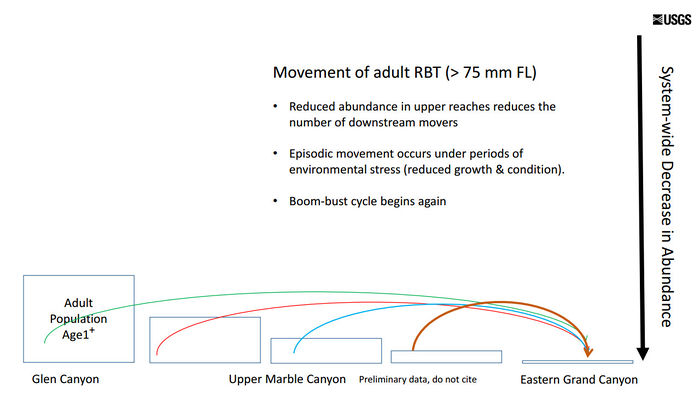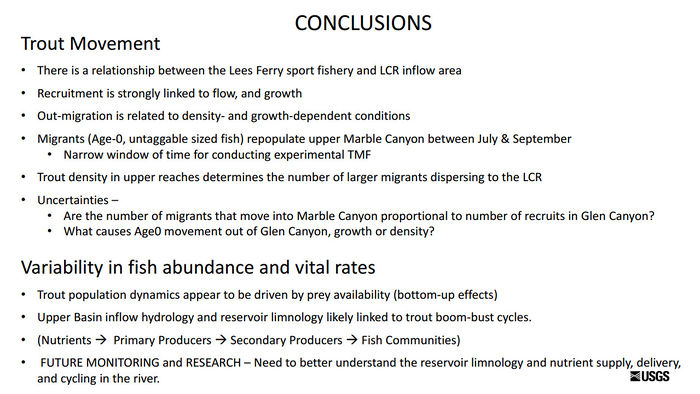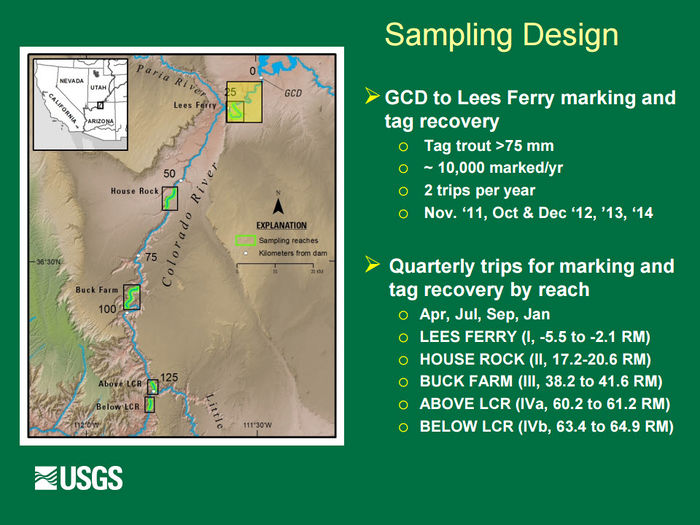Difference between revisions of "Natal Origins Project (NO)"
From Glen Canyon Dam AMP
Cellsworth (Talk | contribs) |
Cellsworth (Talk | contribs) |
||
| Line 25: | Line 25: | ||
*There is a low probability for an individual rainbow trout to move large distances. | *There is a low probability for an individual rainbow trout to move large distances. | ||
| − | *Abundance is a key factor: the more rainbow trout upstream in the Lees Ferry reach = more trout will move downstream to the LCR reach | + | *Abundance is a key factor: the more rainbow trout upstream in the Lees Ferry reach = more trout will move downstream to the LCR reach in search of unoccupied habitat |
| + | *Condition may be a secondary factor: when food resources become limited, rainbow trout will move downstream in search of food | ||
*Recruitment in the reach below the LCR can be accounted for solely by immigrants from upstream sources | *Recruitment in the reach below the LCR can be accounted for solely by immigrants from upstream sources | ||
| − | *Food limitation | + | *Food limitation led to the collapse in the trout population, and by extension also likely happened in the downstream reaches. |
*Inflow hydrology and reservoir limnology likely govern the quality and quantity of nutrients supplied to the downstream river segments. | *Inflow hydrology and reservoir limnology likely govern the quality and quantity of nutrients supplied to the downstream river segments. | ||
*Nutrient limitation is hypothesized as being the “BIG HAMMER” to the riverine ecosystem, which needs to be evaluated in greater detail in future research. | *Nutrient limitation is hypothesized as being the “BIG HAMMER” to the riverine ecosystem, which needs to be evaluated in greater detail in future research. | ||
Revision as of 08:25, 27 April 2017
|
|
|
| -- |
-- |
-- |
|---|
|
|
